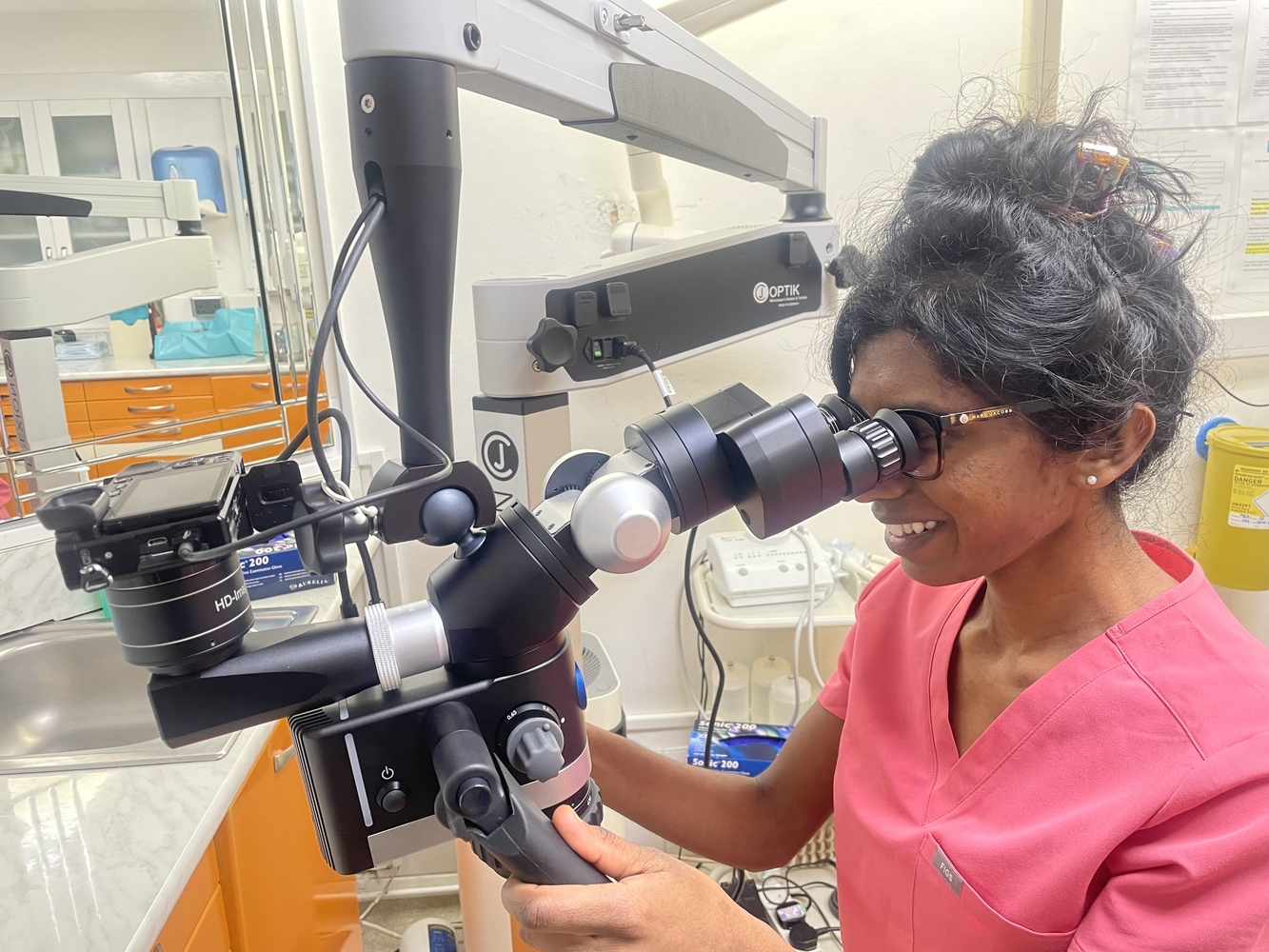Microsurgical endodontics
Microsurgical endodontics represents a pinnacle of precision in dental care, leveraging surgical operating microscopes (SOMs) to enhance the execution of intricate procedures within the dental pulp and periapical tissues. This advanced approach to endodontics, or root canal treatment, is distinguished by its utilization of magnification and high-intensity lighting to facilitate interventions that are beyond the scope of conventional techniques.

Purpose
- Preservation of Natural Teeth: Microsurgical endodontics provides a viable alternative to tooth extraction when traditional root canal treatments are not feasible or have failed, particularly in cases of complex anatomical challenges.
- Addressing Specific Dental Conditions: It is particularly beneficial for managing conditions such as persistent infections, root fractures, obstructions within the root canals, and the need for retreatment of previously failed root canal therapies.
Benefits
- Enhanced Precision and Visibility: The magnification provided by the microscope, ranging from 4x to 25x, enables endodontists to see minute structures within the tooth and surrounding tissues, allowing for more precise and delicate surgical interventions.
- Improved Clinical Outcomes: Research and clinical studies have demonstrated that microsurgical procedures often result in higher success rates compared to traditional surgical methods, attributable to the enhanced precision and reduced tissue trauma.
- Reduced Tissue Trauma: The minimally invasive nature of microsurgical techniques typically involves smaller incisions and less tissue manipulation, which contributes to quicker recovery times, reduced postoperative discomfort, and less swelling.
Examples of Microsurgical Procedures
- Apicoectomy: Removal of the apex (tip) of a tooth root, along with any infected tissue, followed by sealing the end of the root canal to prevent further infection.
- Retrograde Filling: A procedure to seal a root canal from the root end, accessed through a small incision in the gum, often performed in conjunction with an apicoectomy.
- Periradicular Surgery: Targeted treatment of infections in the bone around the root tip, addressing issues beyond the reach of conventional root canal treatment.
- Internal Microsurgery: Removal of obstructions or broken instruments within the root canal system that cannot be addressed through non-surgical root canal treatment.
Additional Considerations
- Accessibility and Training: Not all dental practitioners are equipped with the necessary surgical operating microscopes or possess the specialized training required for performing microsurgical endodontic procedures.
- Case Selection and Cost: While microsurgical endodontics offers significant benefits, it is not universally applicable to all dental conditions. The decision to employ this technique should be based on a thorough assessment of the individual case, considering factors such as the specific dental issue, the patient's overall health, and potential cost implications.
- Consultation with an endodontist: Patients considering microsurgical endodontics should seek consultation with an endodontist who has specialized training and experience in microsurgical techniques. This ensures that patients receive the most appropriate and effective treatment tailored to their specific needs.
In conclusion, microsurgical endodontics enhances the scope and efficacy of traditional endodontic treatments through the use of advanced magnification and lighting. This approach not only facilitates the preservation of natural teeth in complex cases but also promotes better healing and patient comfort. As with any specialized medical or dental procedure, a thorough evaluation by a qualified professional is essential to determine the suitability and potential benefits of microsurgical endodontics for each individual patient.
Original post here: Microsurgical endodontics
Comments
Post a Comment